 |
A recent survey conducted by the Center for State and Local Government Excellence suggests that hiring by local and state governments is on the rise for the second year in a row. Some of the highlights of the survey include:
- The majority of government HR managers (73%) reported hiring employees in 2015, up from 66% last year.
- The majority of survey takers indicated that they had made changes to their healthcare benefits—this has been true for the 5 years before.
- Many of those surveyed (43%) answered that they had to shift costs to their employees in the form of higher copayments, premiums, and deductibles.
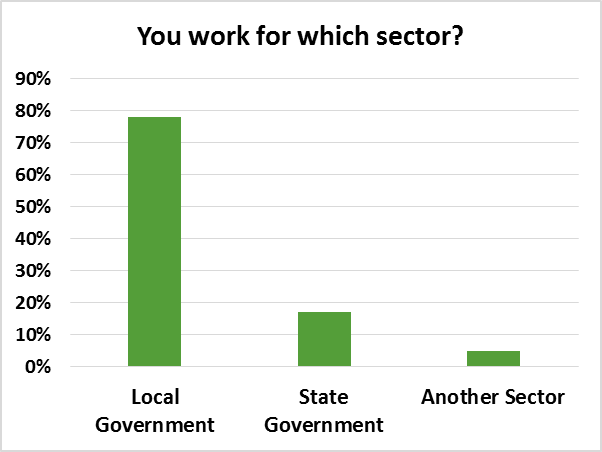
The Center for State and Local Government Excellence interviewed 336 people. The majority (78%) of those polled work for local government, 17% work for the state government, and only 5% work for another sector.
How Has the Workforce Changed?
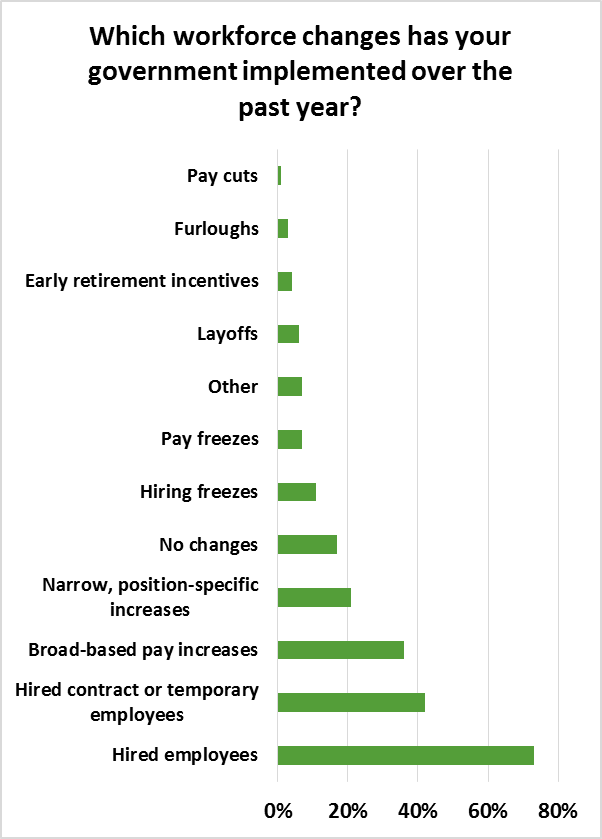
When asked what kinds of workforce changes occurred in the last year, the majority of respondents (78%) answered that they had hired employees. The second highest response (42%) was that respondents had hired contract or temporary employees. Just over one-fifth of respondents (21%) answered “narrow, position-specific increases.” More people answered that there had been no changes (17%) than any of the other remaining responses, including hiring freezes, pay freezes, layoffs, early retirement incentives, furloughs, and pay cuts.
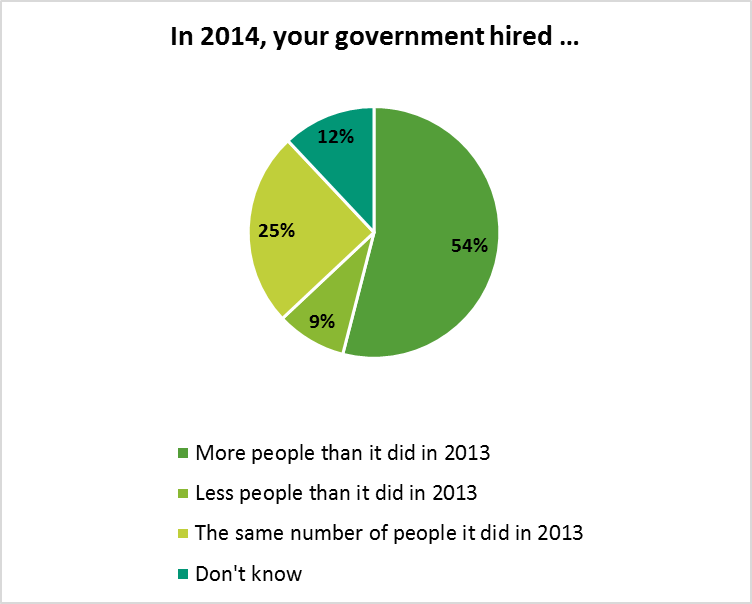
When compared to 2013, 54% of respondents indicated that their government had hired more people. Trailing far behind, the second most common indication (25%) was that their government had hired the same number of people as in 2013. Smaller percentages of respondents didn’t know (12%) or answered that their governments had hired less people than 2013 (9%).
Compared to 2013, 47% of respondents answered that retirements were up in 2015 while 31% indicated that they were about the same. Only 12% of respondents answered that retirements were lower than in 2013. Responses were very different regarding layoffs. The majority of survey takers (50%) indicated that layoffs were the same as 2013, while only 6% answered that they were higher.
The Demand for Employee Skills

Participants were asked “What skill set is most needed in new hires?” The majority (64%) answered that interpersonal skills were the most needed. Following close behind, 60% of respondents answered that technology skills were most needed. Some of the other responses were “written communications” skills at 41%, “management” skills at 29%, and 18% answered “finance” skills. Only 5% of respondents thought that social media skills were important.
The Nature of Recruiting
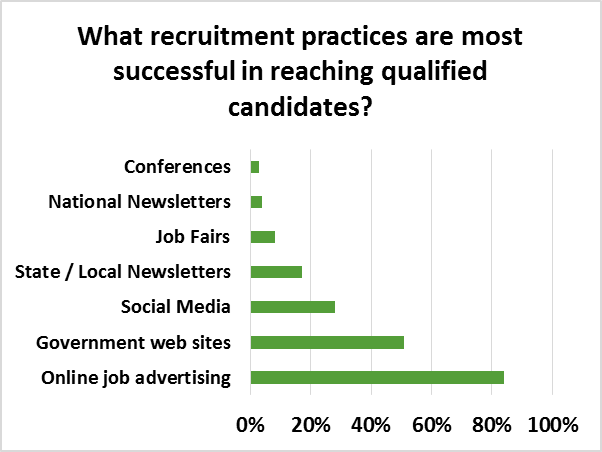
Respondents were asked to rate those recruitment practices they considered to be the most successful at reaching a qualified candidate. The overwhelming number one response was “online job advertising” at 84%. In a not-so-close second, 51% answered it was “government websites,” while only 28% answered “social media.”
Delaying Retirement
A lot of talk over the past few years has revolved around employees who could have retired but chose to stay in the workforce. Survey takers were asked what their retirement-eligible workers were doing. The majority (36%) answered that there were no changes. The second highest response (27%) indicated their retirement-eligible workers had decided to postpone their retirements. Nearly one-quarter (24%) responded that they simply don’t know, while the minority of respondents (13%) indicated that workers had accelerated their retirement dates.
Changing Retirement Benefits
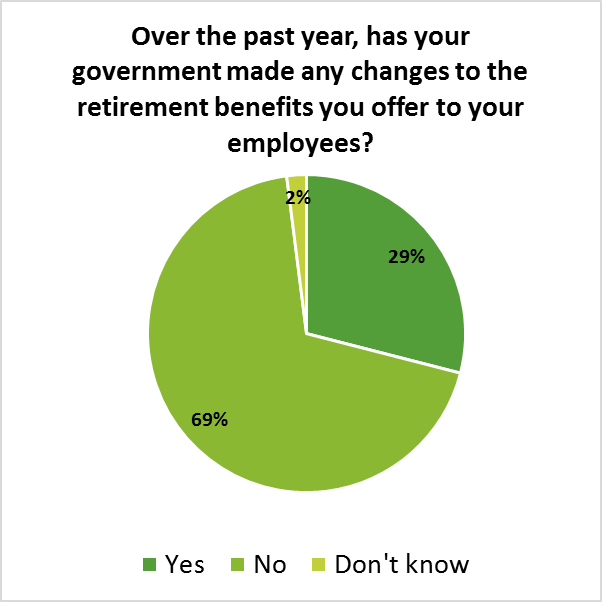
Most respondents (69%) indicated that their government has not made any change to their retirement benefits. Nearly one-third (29%) indicated their government had made changes. Only 2% of survey takers were not aware of whether their government had made such changes.
Tomorrow, more results from the survey, plus an introduction to an interactive webinar, Digital Profiles—The New Résumé: How to Search Online Profiles for Recruitment Success.
